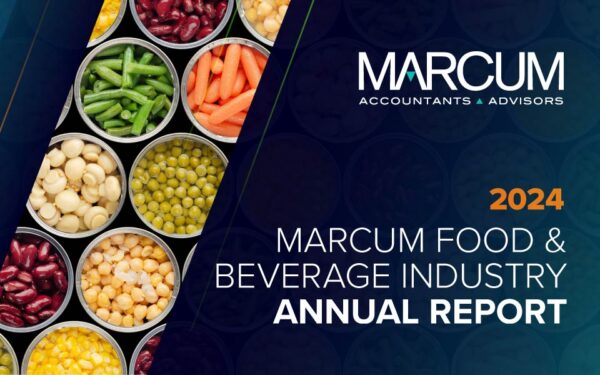Now is the Time for Private Companies to Implement New Lease Standards
It’s been more than six years since the Financial Accounting Standards Board (FASB) issued a new lease standard. But because of delays in the implementation dates and limited resources available, many privately held companies have yet to implement the new standard. Since implementation can significantly impact financial ratios, you may find that compliance with financial covenants and other agreements need to be altered. So if you have yet to implement, the time is now.
The first step in implementing the new standard (ASC 842) is identifying all leases. In a contract, if there is the right to direct the use of a physical asset and gain all the economic benefits from it, you most likely have a lease. Then you can gather all applicable data and begin implementing the changes. This can take a lot of time and effort, especially for companies that have many locations and multiple leases, like restaurant and franchise groups.
There are two types of leases under the new standard, just as there were previously. The old standard (ASC 840) called them “capital leases” and “operating leases.” The new standard has dubbed them “financing leases” and “operating leases.”
Financing Lease
The first type of lease, the financing lease (formerly the capital lease), was only minimally changed under the new guidance. Under the old standard, if any of the following conditions were present, the lease would be considered a capital (financing) lease:
- A transfer of ownership of the asset at the end of the term.
- An option to purchase the asset at a discounted price at the end of the term.
- The term of the lease is greater than or equal to 75% of the useful life of the asset (the 75% bright line language is removed under ASC 842, but the concept remains true).
- The present value of the lease payments is greater than or equal to 90% of the asset’s fair market value (the 90% bright line language is removed under ASC 842 and replaced with ‘substantially all’ of the fair value).
The new standard has added one more condition that would cause a lease to be considered a financing lease:
- The asset under lease is of such a technical nature that it has no alternative use for the lessor at the end of the lease term.
Put into plain English, a financing lease very closely resembles the purchase of an asset through financing, so the accounting follows. The asset being leased is capitalized, and the lease is set up in virtually identical fashion to a loan. The new standard calls the assets “right to use” assets, but as a practical matter keeping these grouped separately from operating lease right to use assets is advisable when keeping depreciation schedules. Most companies will see little change as far as financing leases are concerned.
Operating Lease
The most significant changes occur with the accounting treatment of operating leases. Under the previous standard, there was no visibility into the lease obligation on the balance sheet. Under the new standard, the lease obligation (“lease liability”) is presented from inception on the balance sheet with an offsetting “right to use” asset. The obligation is based on the present value of the lease payments using the lessee’s “incremental borrowing rate,” which is defined as the interest rate a lessee would have to pay to borrow funds to finance a similar asset. Because many small companies have trouble identifying that rate, a risk-free rate, such as a U.S. Treasury rate, can be used as a practical expedient. It should be noted that for leases of 12 months or less, companies can elect to exempt the lease and just expense payments as incurred.
Under the new standard, lease expense is computed exactly the same way. Deferred rent caused by escalating leases and tenant improvement allowances are essentially computed the same way. As the example below will show, these are now encompassed into the difference between right to use assets and lease liability. So if you were properly accounting for leases under the old standard, your existing records make for a good “checkpoint” as you implement the new standard.
Let’s go through a simple operating lease example under the old and new standards using a three-year escalating lease with no tenant improvement allowance.
Assume lease payments are $5,000 per month in year one, $7,000 per month in year two, and $9,000 per month in year three. The company’s incremental borrowing rate is 4%.
Under the old standard, nothing would be recorded at inception. Under the new standard, a liability of $236,076 (the present value of the lease payments at 4%) and a right to use asset of $236,076 would be booked at inception. (Note that while there is an asset and a liability recorded on the books, there is still a “net” zero effect because they are the same number.)
Under both the old and new standards, lease expense is calculated on the straight line basis. This means you divide the total payments by the lease term ($252,000 / 36 months), which comes to $7,000 per month or $84,000 per year.
Under the old standard, after the first year the cash paid would be $60,000, rent expense would be $84,000, and the difference, deferred rent of $24,000, would be recorded as a liability.
Under the new standard, the lease liability amortizes like a loan at 4%, so after cash of $60,000 is paid, the remaining liability balance is $183,766. A rent expense of $84,000 is recorded and the asset is amortized down to $159,766. The difference between the asset and the liability is $24,000. Note that it is a “net” liability — the same figure as the old standard — but recorded as two numbers, the right to use asset and the lease liability. This is why your old records serve as a good checkpoint when you implement the new standard.
Of course, Marcum can assist in implementing the new standard and in recommending third-party providers.



















